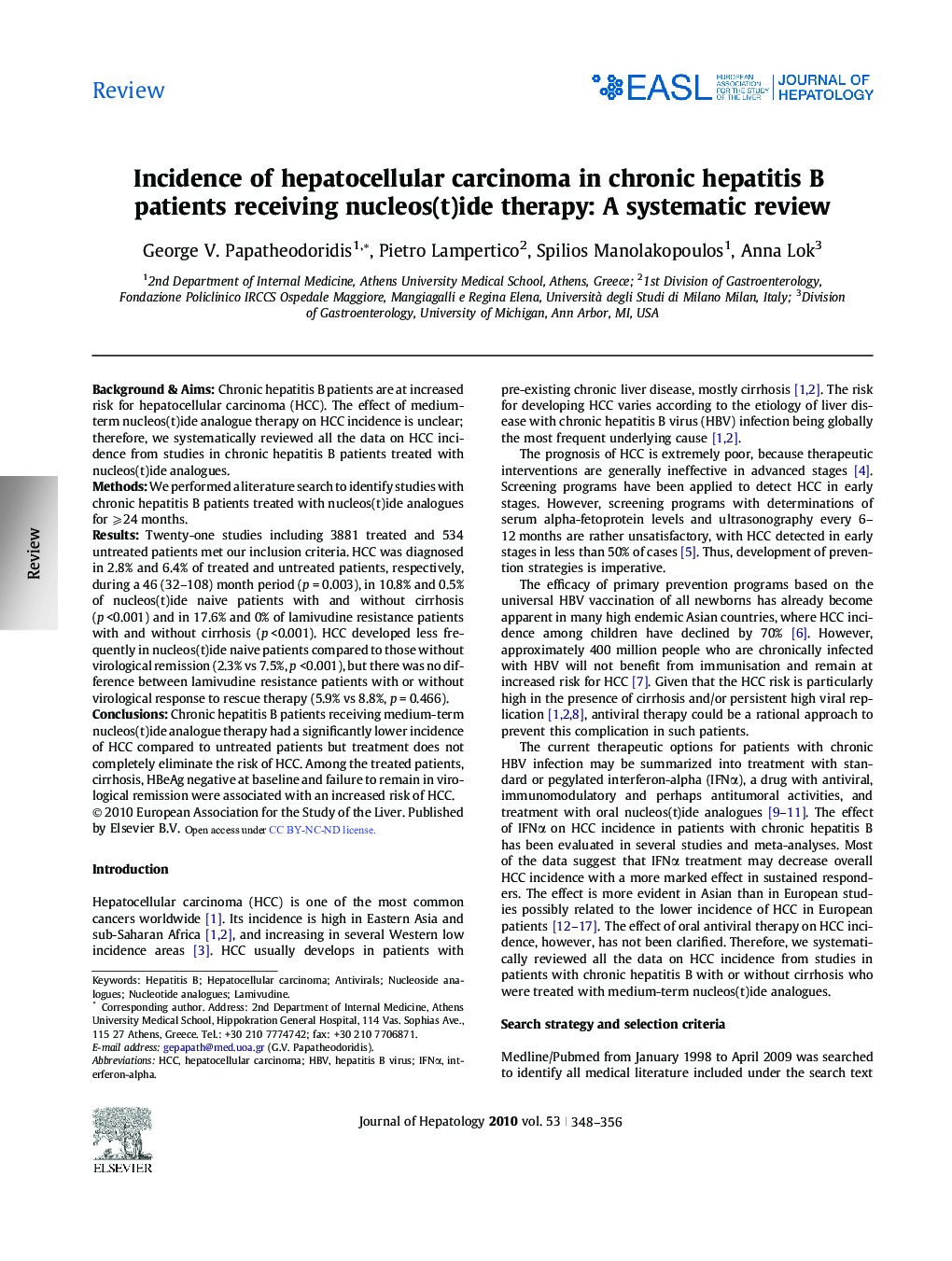| Article ID | Journal | Published Year | Pages | File Type |
|---|---|---|---|---|
| 6105633 | Journal of Hepatology | 2010 | 9 Pages |
Background & Aims: Chronic hepatitis B patients are at increased risk for hepatocellular carcinoma (HCC). The effect of medium-term nucleos(t)ide analogue therapy on HCC incidence is unclear; therefore, we systematically reviewed all the data on HCC incidence from studies in chronic hepatitis B patients treated with nucleos(t)ide analogues. Methods: We performed a literature search to identify studies with chronic hepatitis B patients treated with nucleos(t)ide analogues for ⩾24 months. Results: Twenty-one studies including 3881 treated and 534 untreated patients met our inclusion criteria. HCC was diagnosed in 2.8% and 6.4% of treated and untreated patients, respectively, during a 46 (32-108) month period (p = 0.003), in 10.8% and 0.5% of nucleos(t)ide naive patients with and without cirrhosis (p <0.001) and in 17.6% and 0% of lamivudine resistance patients with and without cirrhosis (p <0.001). HCC developed less frequently in nucleos(t)ide naive patients compared to those without virological remission (2.3% vs 7.5%, p <0.001), but there was no difference between lamivudine resistance patients with or without virological response to rescue therapy (5.9% vs 8.8%, p = 0.466). Conclusions: Chronic hepatitis B patients receiving medium-term nucleos(t)ide analogue therapy had a significantly lower incidence of HCC compared to untreated patients but treatment does not completely eliminate the risk of HCC. Among the treated patients, cirrhosis, HBeAg negative at baseline and failure to remain in virological remission were associated with an increased risk of HCC.
